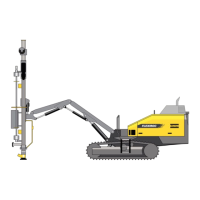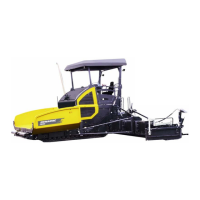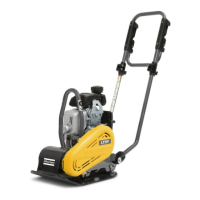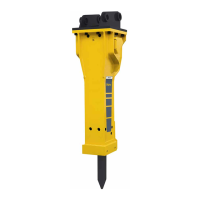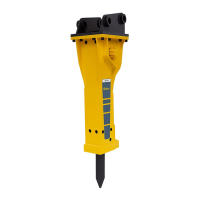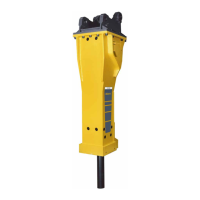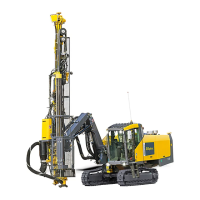FlexiROC T30 R 17 Winch
124 No: 3629357835.1.3629419915 en-US
17.8.4 Checking Cable for Corrosion
Corrosion is especially problematic in marine environments and in areas where the air is
polluted by industrial emissions. Corrosion can reduce operational strength through rust
spots and static tensile strength through a reduction in the cross section of the metallic ca-
ble. Severe corrosion can reduce elasticity.
Outer corrosion can be easily detected through visual examination.
Inner corrosion is more difficult to detect. Inner corrosion is characterised by the following:
n Absence of gap between the strands in the outer layer of the cable, often in combina-
tion with wire breaks in the strands.
n The cable diameter varies.
The parts of the cable that are bent over discs usually have a decreased diameter. At any
sign of corrosion, the cable should be checked by an authorised person. If inner corrosion
is detected, the cable must be scrapped.
17.8.5 Checking Cable for Decreased Diameter
A decrease in the cable diameter can occur because of material fatigue. Material fatigue
can be caused by:
n Inner surface wear and surface wear nicks
n Inner surface wear through friction between the strands and wires in the cable
n Fatigue in the plastic core
n A break in the steel core
n A break in the inner layer in a multi-strand cable
If the diameter if the cable decreases more than 10% in relation to the nominal diameter of
the cable, it must be scrapped. It must be scrapped even if no breaks have been detected.
17.8.6 Checking Cable for Reduced Elasticity
Under certain conditions, the cable loses its elasticity. Reduced elasticity is difficult to de-
tect. If in doubt, consult a specialist. If the cable has lost elasticity, the following character-
istics usually appear:
n Decrease in cable diameter
n Extension of the cable
n No gap between individual wires and between the strands. This is caused by its com-
ponents being pressed together.
n Fine, brown dust inside the strands.
n Even if there are no visible wire breaks, the cable is noticeably stiffer.
n The cable's diameter decreases more quickly than during normal wear of the individual
cable strands.
Reduced elasticity can lead to sudden cable breaks during heavy loads. The cable should
be scrapped.
17.8.7 Checking Cable for Heat Exposure
The effects of heat can be established through annealing colour. Cables exposed to ex-
treme heat must be scrapped.
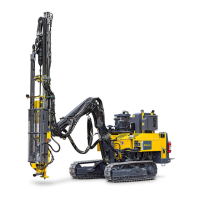
